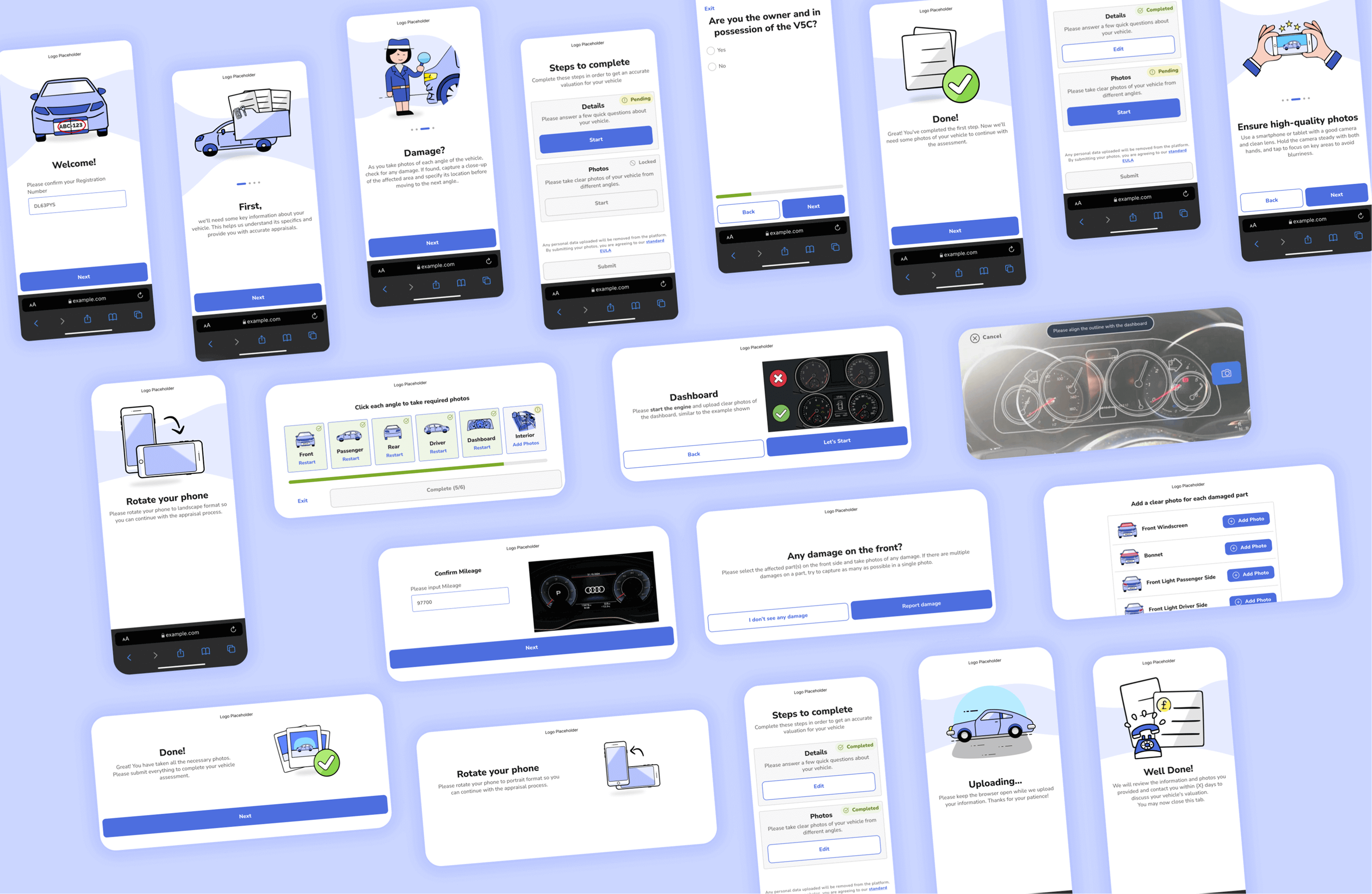
For Car Dealerships who want better-qualified leads the Self-Appraisal is a consumer-facing car inspection tool that is easy to use, customised and integrated. Unlike traditional manual processes the tool is easier to use and integrated with existing tools to fit with dealers sales process
Streamline the vehicle appraisal process by creating a self-service app that benefits both vehicle owners and dealerships
December 2024 - March 2025 | 4 months
Cox Automotive
UX Designer
Figma, Mural, Userlytics, Hotjar, Dovetail, Balsamiq

To ensure efficiency and adaptability throughout the project, I leveraged Agile Methodology and Lean UX principles. These frameworks helped streamline collaboration, prioritise user value, and iterate quickly based on feedback.
Customers who lease or buy vehicles face a challenging appraisal process when trying to assess vehicle condition before ending a lease or trading in their car. For dealerships and leasing companies, accurately evaluating vehicle conditions remotely is time-consuming, often requiring follow-up inspections and leading to unexpected costs, disputes, and missed opportunities for smoother sales and customer satisfaction.
Dealerships, leasing companies, and OEMs need a streamlined, reliable way to assess vehicle conditions from a distance. Customers need a simple, trustworthy tool that lets them document vehicle condition accurately and transparently, reducing surprises and easing decisions for everyone involved.
How might we create an easy-to-use tool that helps customers document their vehicle’s condition accurately and transparently, so dealerships and leasing companies can make timely, informed decisions that lead to smoother transactions and higher customer satisfaction?
Early in the project, I conducted a thorough competitive analysis of existing vehicle appraisal solutions. This research revealed several opportunities for innovation, particularly around user guidance and photo capture assistance. While competitors offered basic documentation tools, none provided the seamless, guided experience our users needed.

Working closely with our product managers and sales team, I gathered insights about user pain points and business requirements. These collaborative sessions helped identify key opportunities:
- Product managers shared user feedback from existing tools
- Sales team provided insights about dealer priorities and workflows
- Development team helped identify technical constraints and possibilities
Through surveys and interviews with customers, we uncovered the motivations of our key stakeholders, and to further empathise with their experiences, I developed detailed user personas. These personas served as a foundation for all subsequent design decisions, ensuring the solution was tailored to their unique needs.

Using the personas, I crafted realistic user scenarios to understand how they would interact with the app. These were used as hypotheses about user behaviour, which were validated during early usability tests.
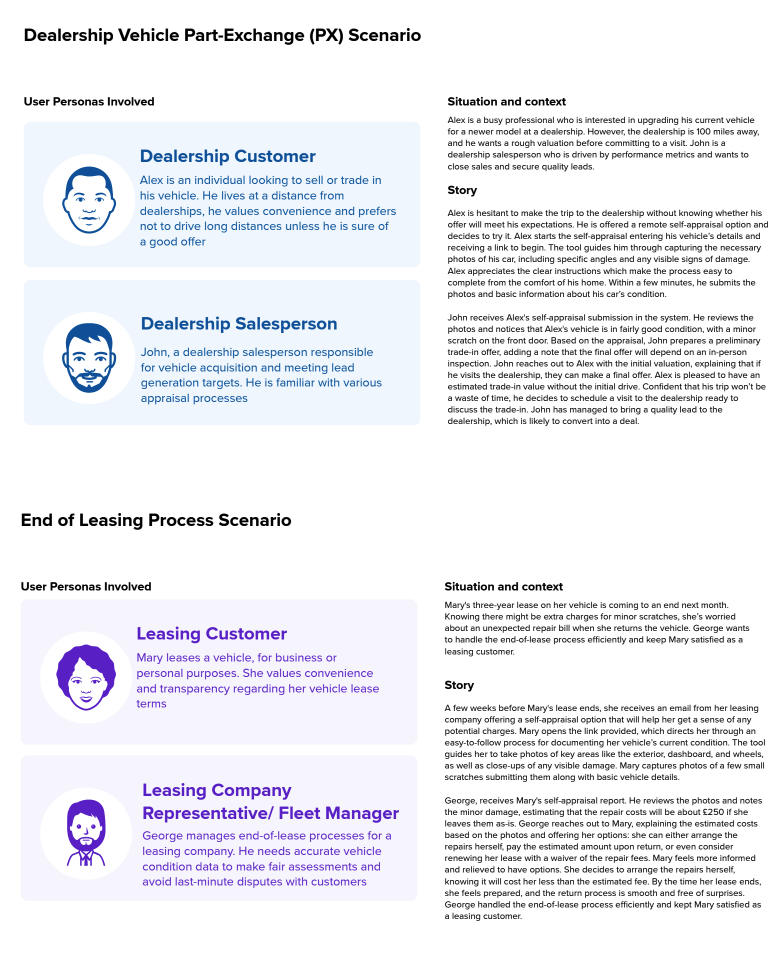
Together with the PMs, we mapped detailed user journeys to visualise the end-to-end experience for our primary personas. These journeys helped identify friction points, such as unclear instructions for photo capture, which informed the development of features like guided photo capture and progress tracking.

I mapped out a comprehensive user flow encompassing key interactions. The flow addressed critical steps in the self-appraisal process, from initiating the appraisal to receiving and reviewing results, with clear decision points and feedback loops.

To generate innovative solutions, I facilitated workshops with cross-functional teams and collaborated regularly with:
- Developers for technical feasibility
- Product managers for business alignment
- Sales team for market feedback
- Quality assurance for testing considerations
Starting with low-fidelity wireframes, I refined flows and screens through multiple feedback cycles.

These iterations culminated in a hi-fidelity interactive prototype that captured the full user journey. To ensure consistency and scalability, I designed a comprehensive design system in Figma, which served as the foundation for all UI components and interactions.

Our key advantage is a streamlined, user-centric appraisal journey. Instead of making users circle the vehicle multiple times, we integrate beauty and damage shots into a single flow. After capturing a beauty shot, users immediately document any damage in that area, reducing movement, saving time, and ensuring no damage is missed.

A key feature of the design system is its customisable colour scheme. The app's primary and secondary colours can be updated to reflect each dealership's unique brand identity, ensuring alignment with their visual standards and providing a personalised user experience. Dealers can further personalise the interface by adding their logo, allowing the app to integrate seamlessly with their existing sales tools.
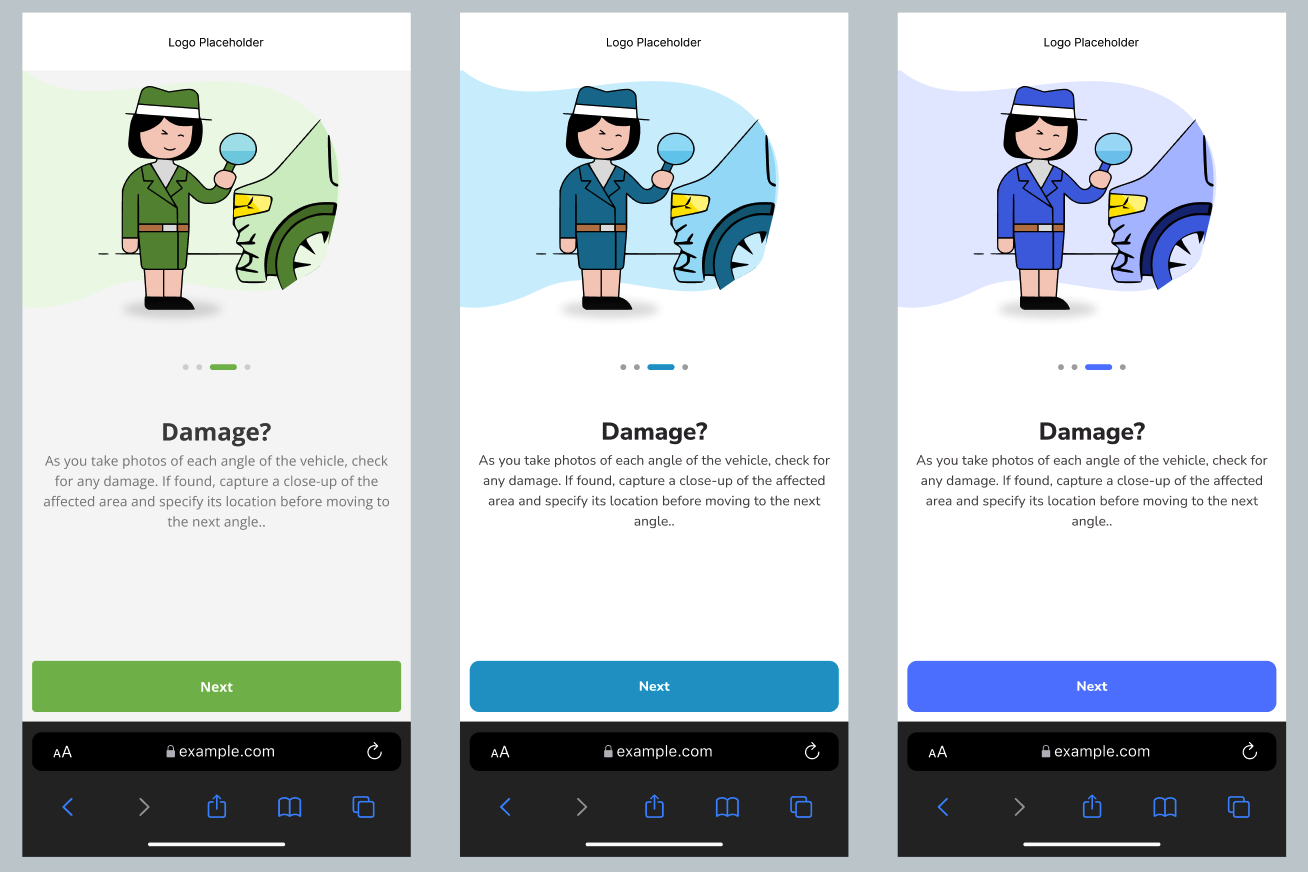
To ensure the final product meet user and business needs effectively, I conducted a moderated usability test using Userlytics. The goal of the usability test was to evaluate the app's interface and user experience, focusing on task completion, clarity of language, ease of navigation, and the effectiveness of calls-to-action. It aims to identify areas for improvement to ensure users can navigate the app intuitively and achieve their goals smoothly.

Usability testing confirmed the vehicle self-appraisal tool’s success, with high satisfaction ratings (4-5/5). Users found the step-by-step guidance and photo alignment features particularly helpful. Testing revealed three improvement areas: interior photo challenges, unclear post-submission steps, and initial confusion in damage reporting.
Users appreciated the clear guidance through each stage of the appraisal process, making it accessible even for non-technical users.
The visual guides for taking photos were highlighted as particularly helpful, ensuring consistent and usable documentation.
Users found it easy to report and document vehicle damage in real-time, increasing confidence in the accuracy of appraisals.
Participants expressed confidence in the accuracy of their self-appraisals, even those with limited automotive knowledge.
Users struggled with capturing clear interior photos due to confined spaces.
Several users were unsure of what happens after they submitted their appraisal, requesting clearer next steps.
Users mistakenly added extra damage due to the button’s prominence, causing unintended actions. This highlights unclear labels, overlooked text, and the need for intuitive design.
Users noted that form elements were too close together, leading to mis-clicks especially on mobile devices.
Reorganize button layout and prominence to improve navigation flow
Add clear timeframe expectations for each step of the process
Clarify damage documentation workflow with visual guides
Increase spacing between form elements to prevent user error
Add video documentation options for complex damage situations
Implement vehicle-specific templates for more accurate appraisals
I think anybody, even if they weren't as technologically savvy... would be able to understand that.
Very satisfied and I say that I'm just thinking that for somebody like my dad who's in his 70s... he would find this easy.
It's what I expected really, um, just a little bit, so, a little bit better.
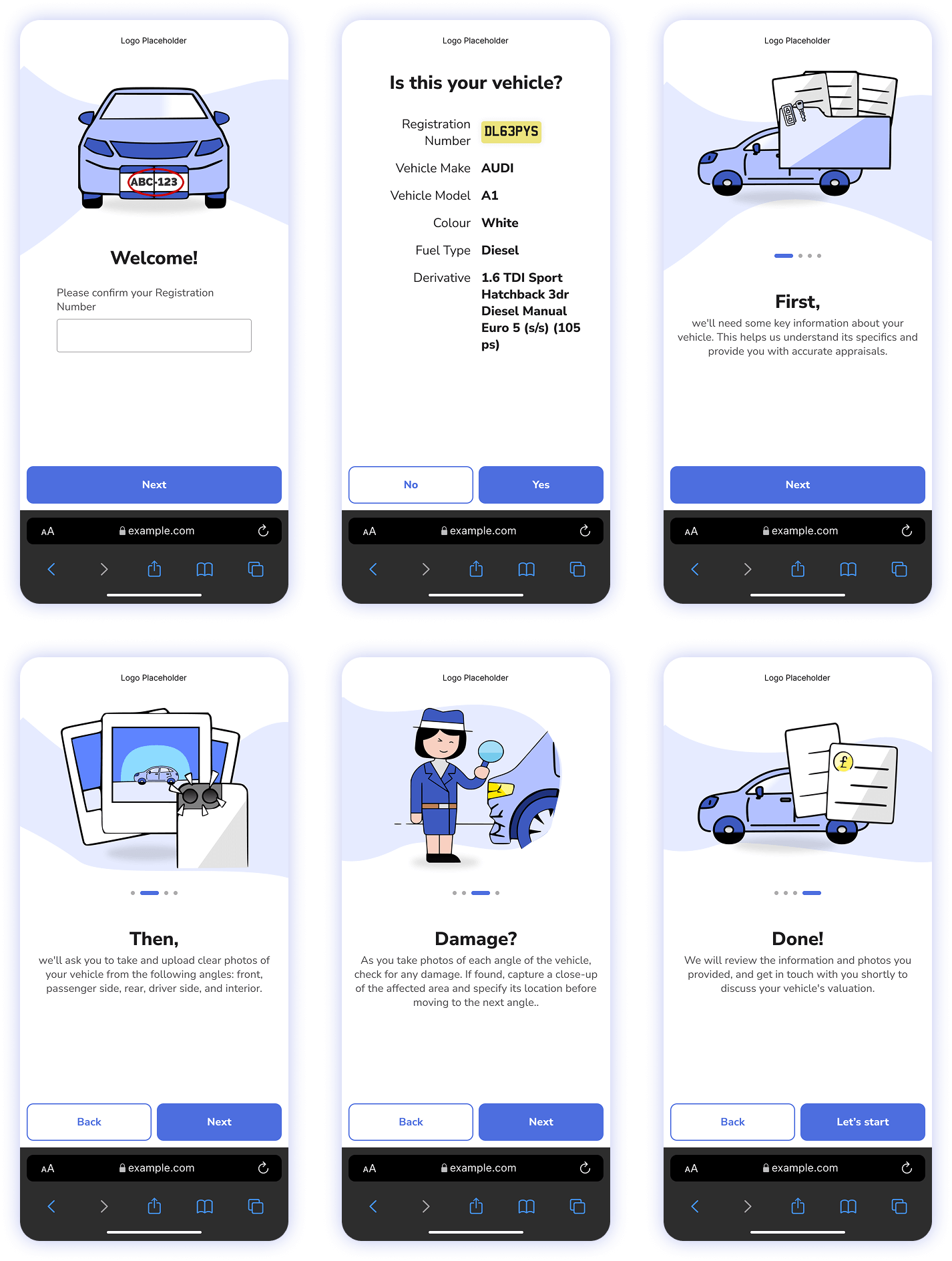
Pop in your registration number and we'll instantly fetch your vehicle details. It's that simple!
No more confusion about what to do next. Our smart app walks you through each step, making the process smooth and hassle-free.
We've transformed the complex world of car valuation into an easy-to-follow journey. Just follow our friendly prompts and you'll be done in minutes.
Ready to begin? Just type your registration number..
Just a few simple questions about your vehicle's history and condition to help us provide an accurate valuation.

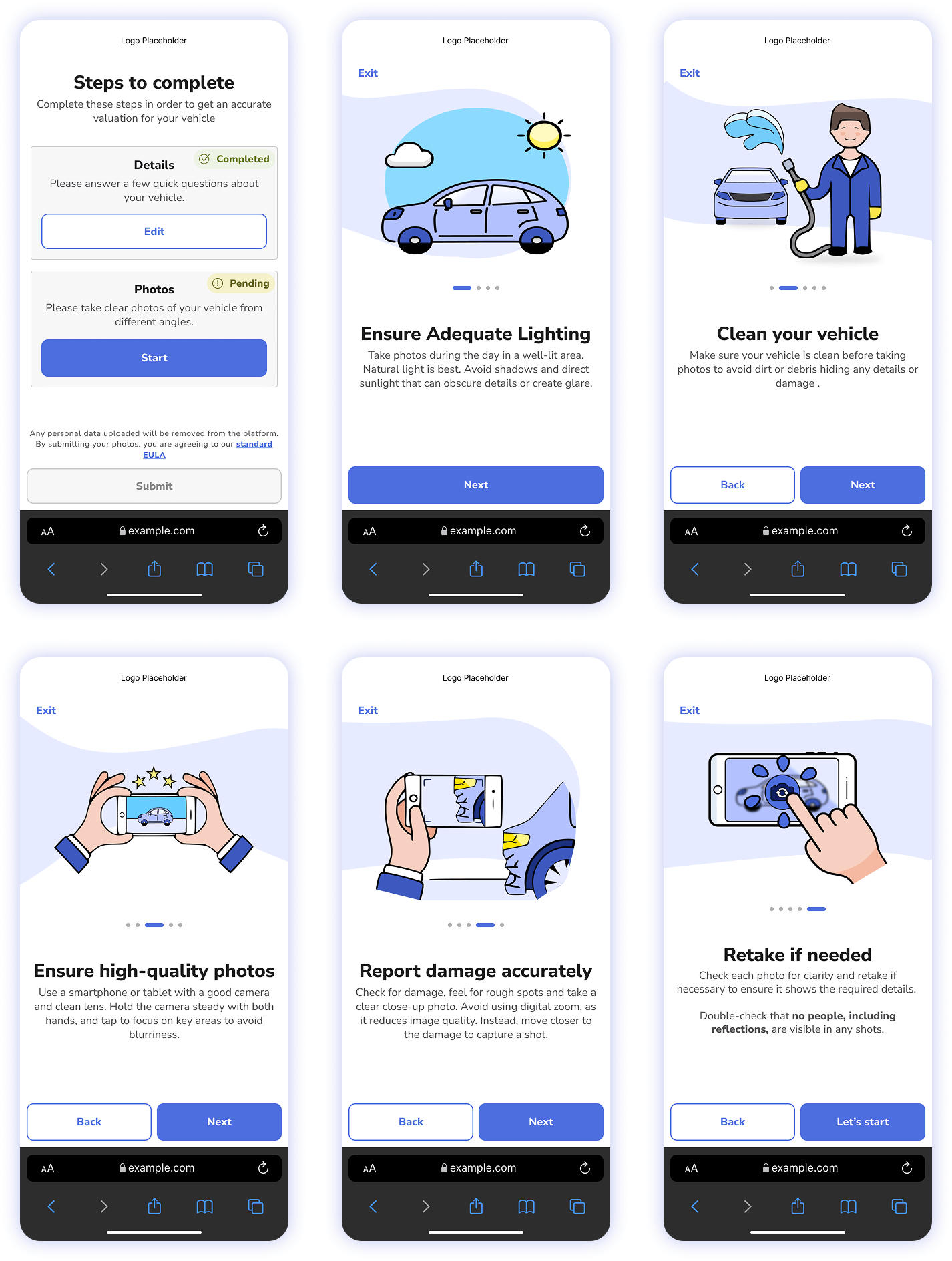
Once you've entered the details, it's time to capture your vehicle through photos.
We provide simple tips to help you get the most accurate valuation - just follow them!
Remember: Better photos = More accurate valuation.
Ready to start? Let’s create a complete picture of your vehicle that dealers can trust.
Select each area to capture both overview and detail shots in one go. Our smart process guides you through your vehicle systematically - no going back and forth!
The outline guides you where to stand and what to capture - just follow the highlights for perfect shots!
Spot damage?
Capture it right after the main shot.
Multiple issues?
Snap them all in one go.
No damage to report?
Simply tap 'I don't see any damage' and move on to the next section. Quick and easy!
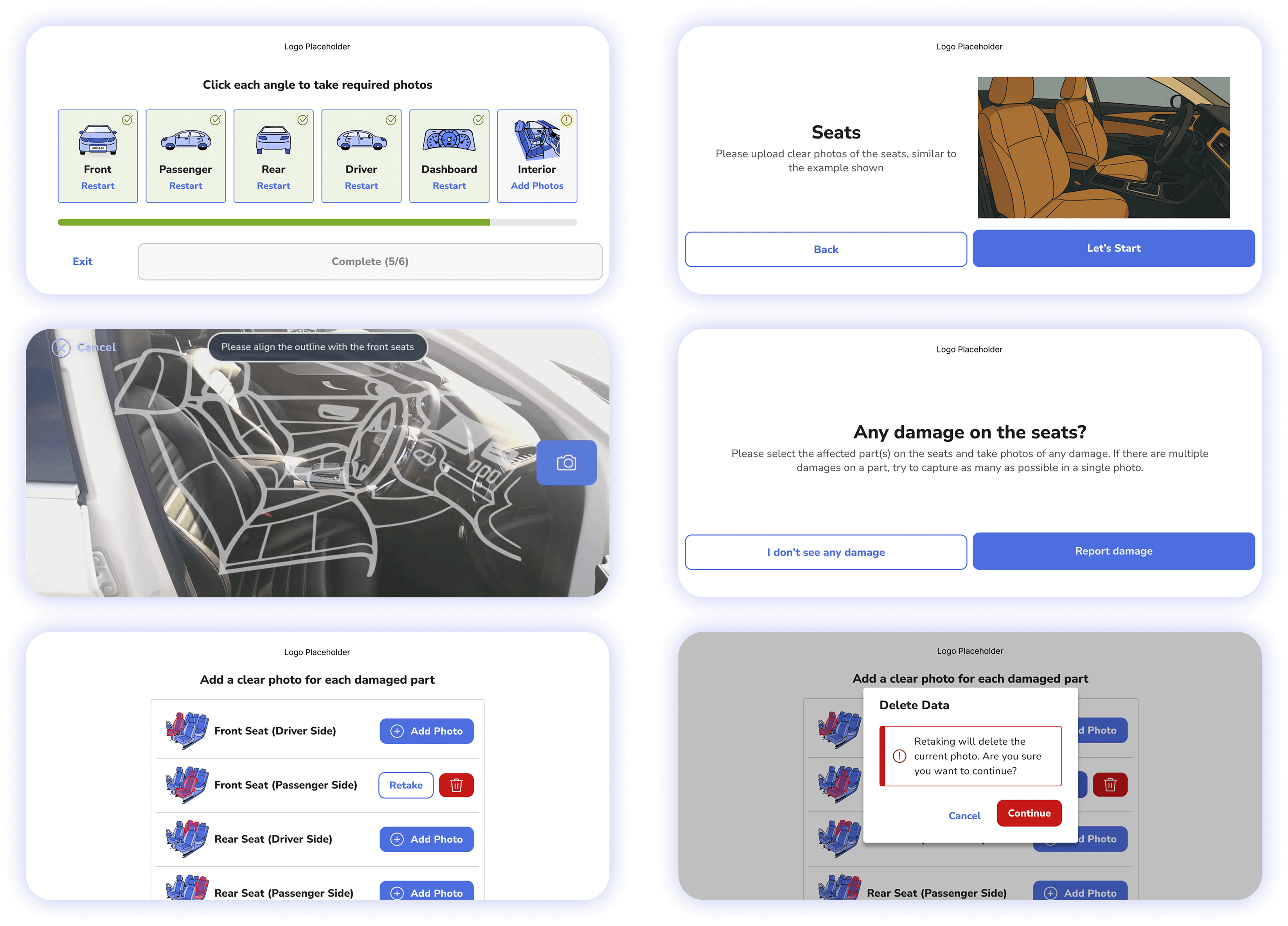
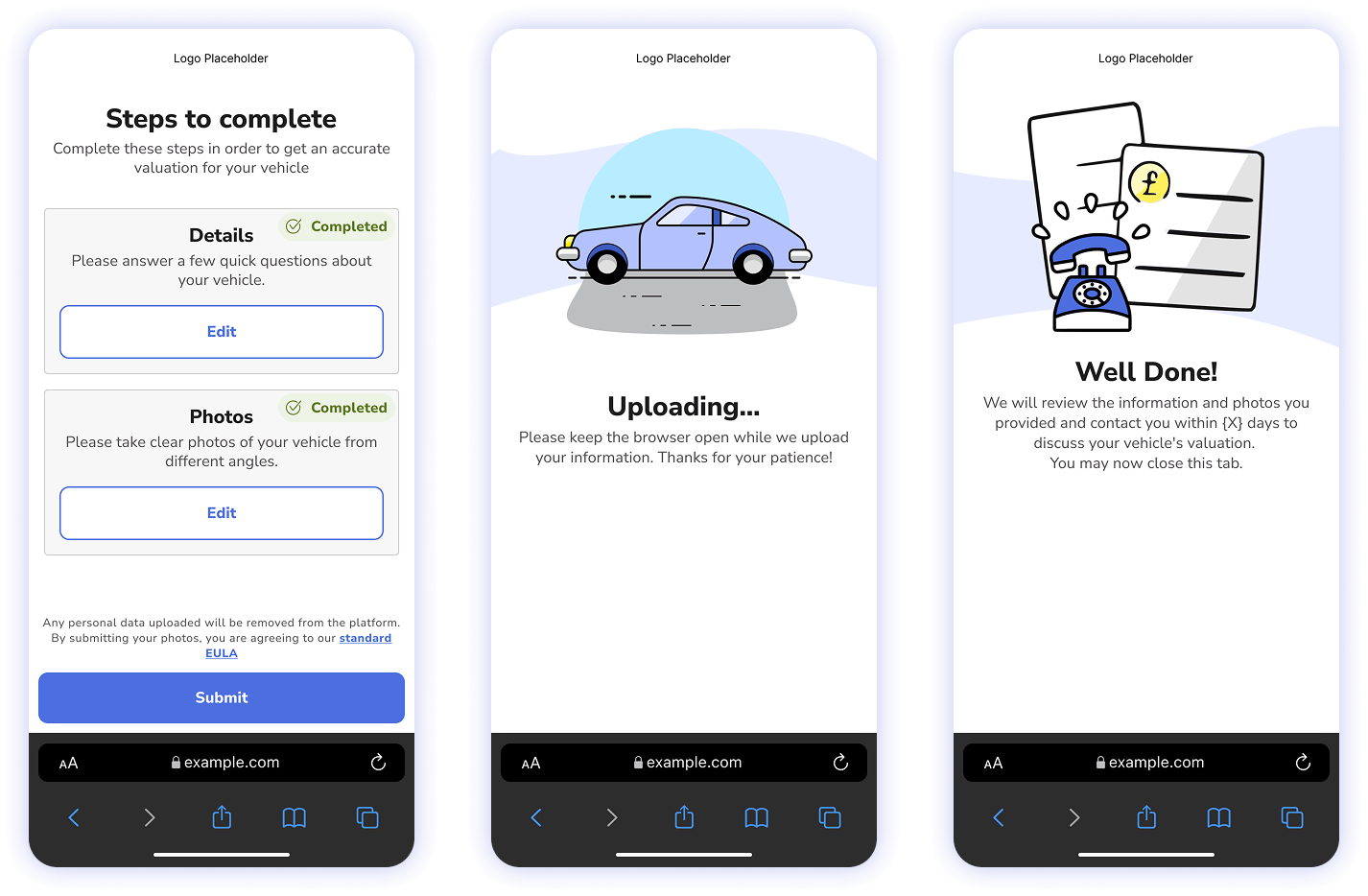
After answering the quick questions about history and ownership and capturing all required vehicle photos - including damage documentation - you need to tap 'Submit' to send your appraisal for review.
The app compiles everything for the dealer, who will carefully review your information and photos. You can expect to be contacted within four days to discuss your vehicle's valuation.
Well done! You've taken the first step toward getting the best value for your vehicle!
The project shows how smart UX design can turn a usually complicated process into something easy and efficient. By focusing on what users need while also meeting business goals, we came up with a solution that works for both dealerships and car owners. It was a great reminder of how important user research, teamwork, and testing are in building solid digital experiences.
The app led to a 50% increase in leads and a 40% increase in new dealership contracts, as more dealerships wanted to adopt the product.
Let's have a talk so you can learn more about my work!
© Copyright Ioanna Lazaridou | All rights reserved.